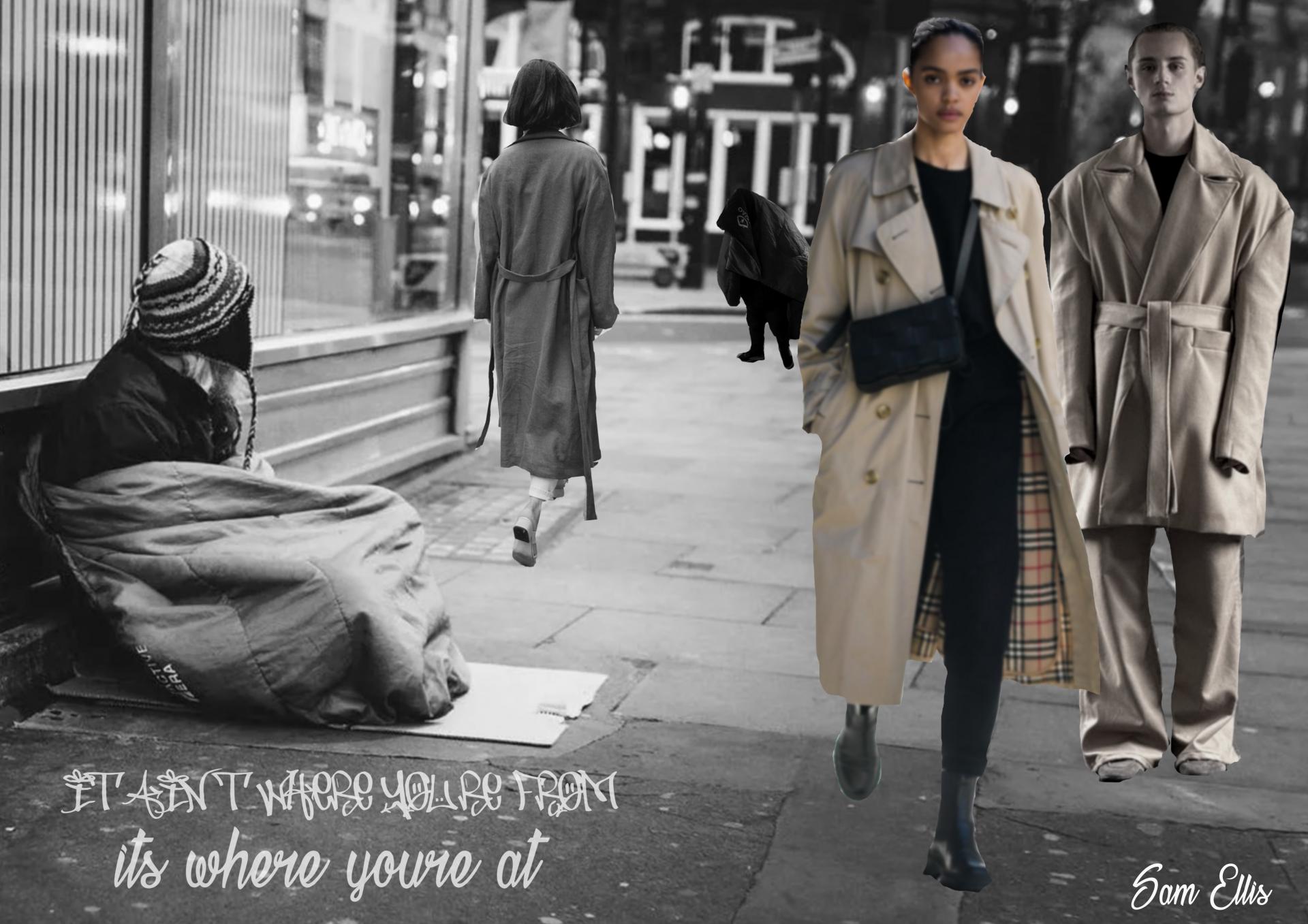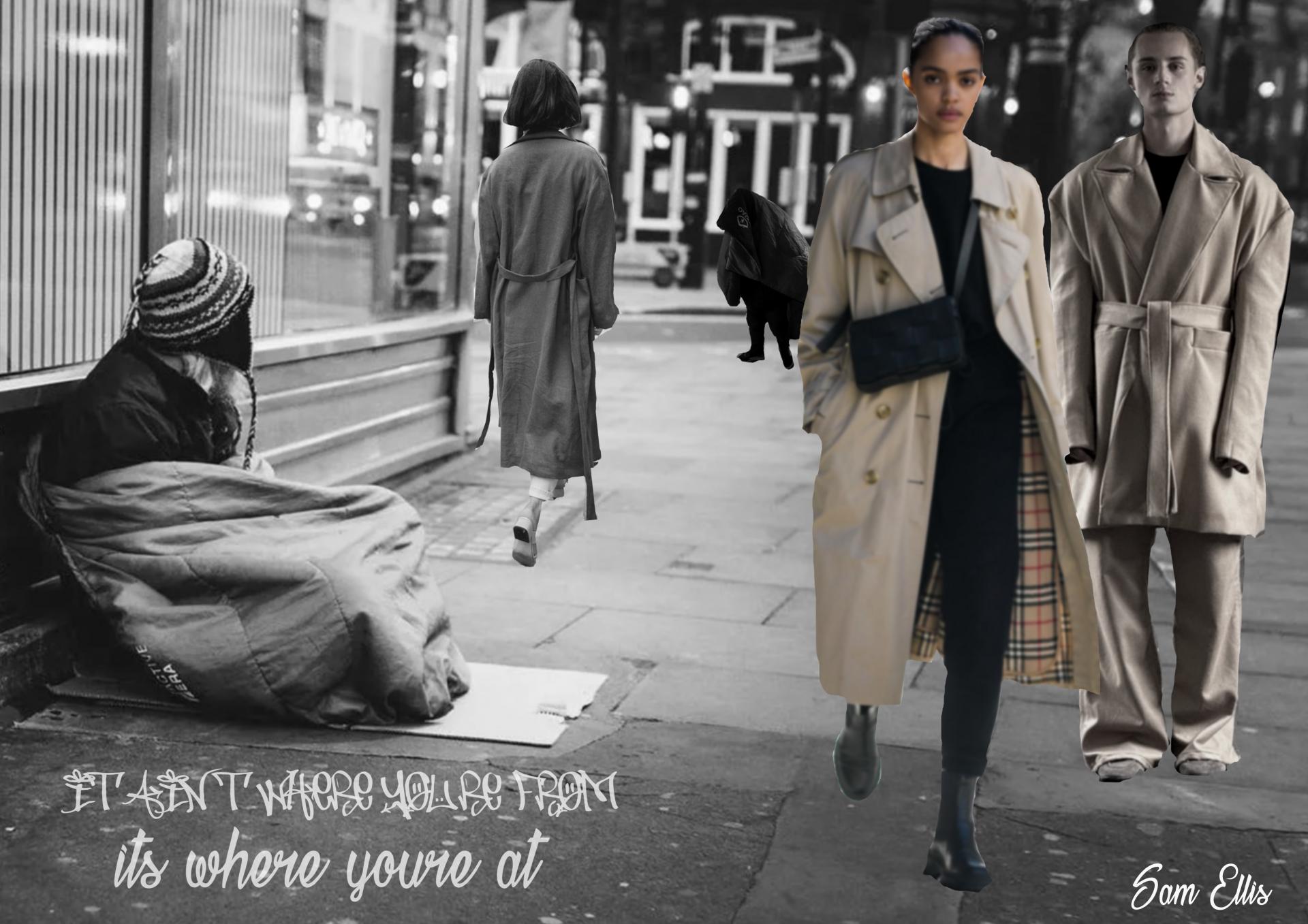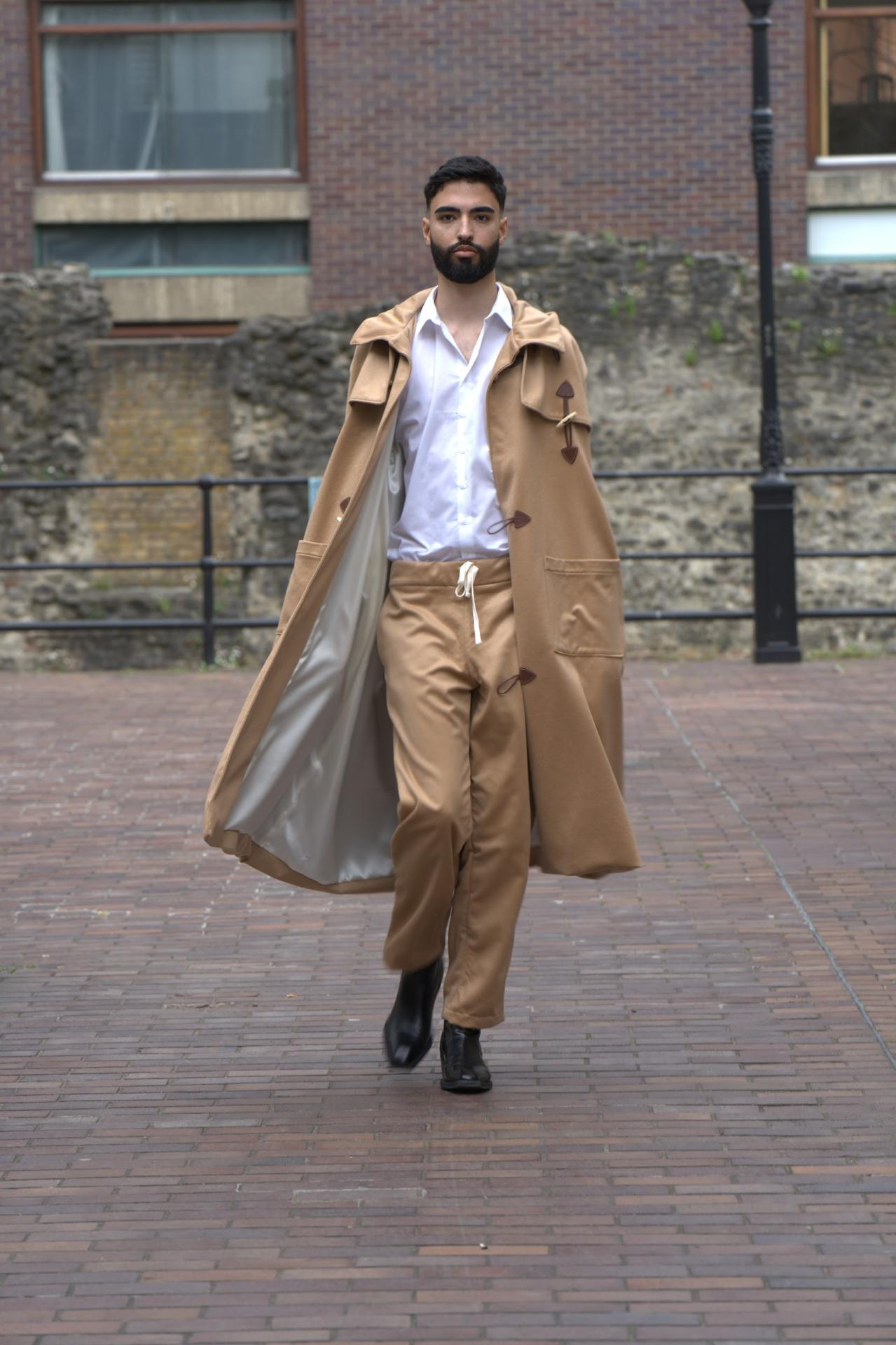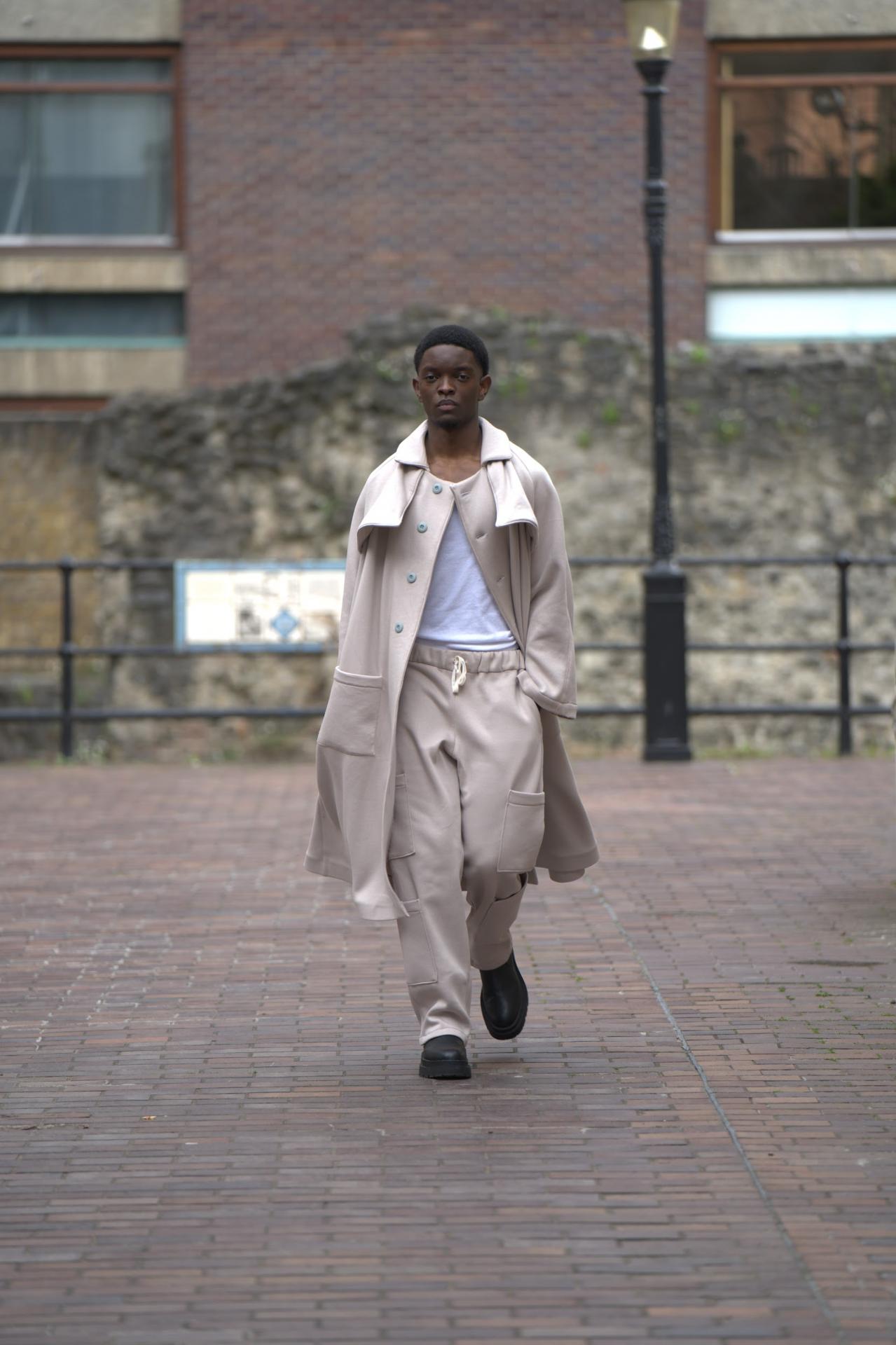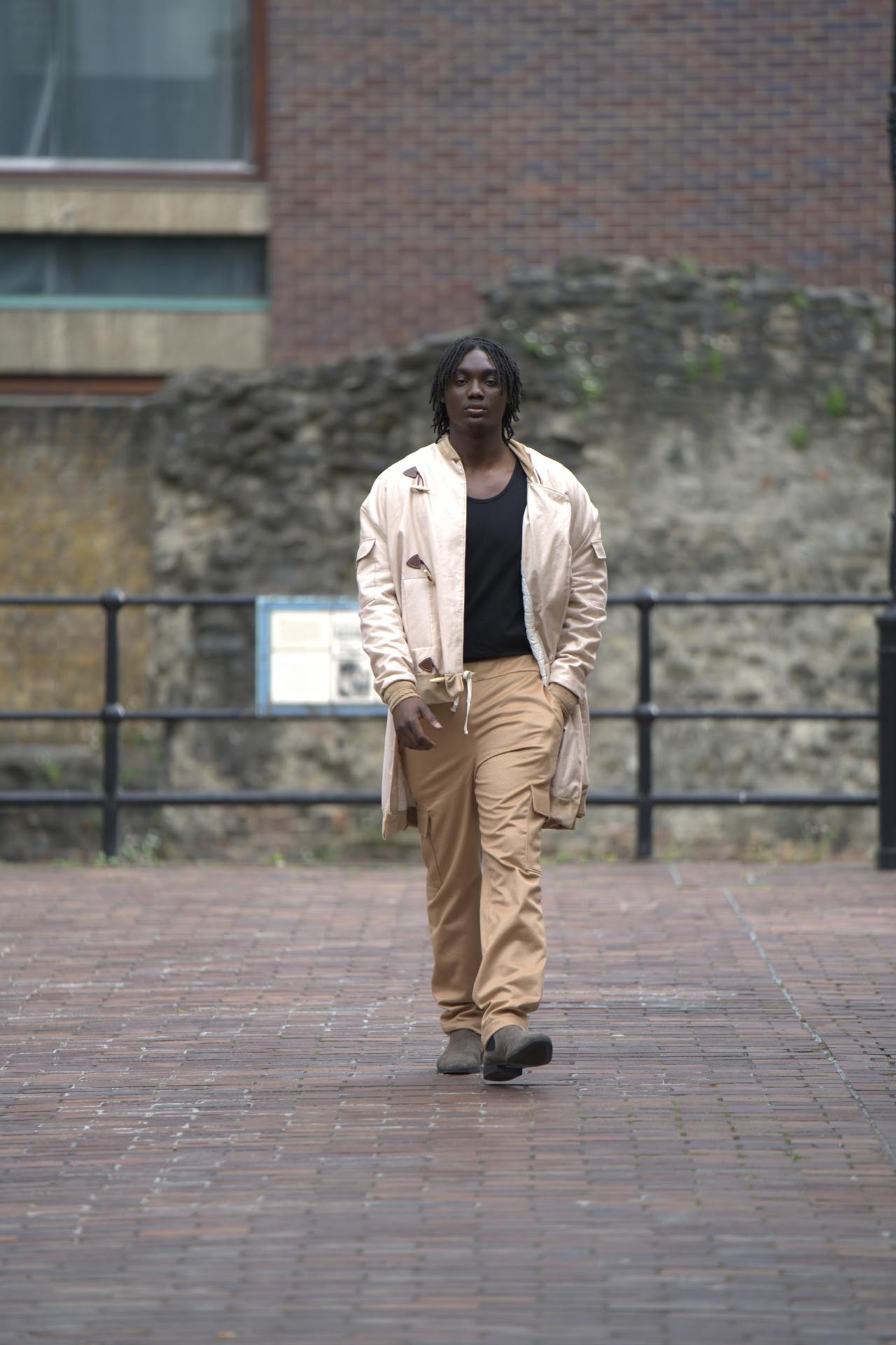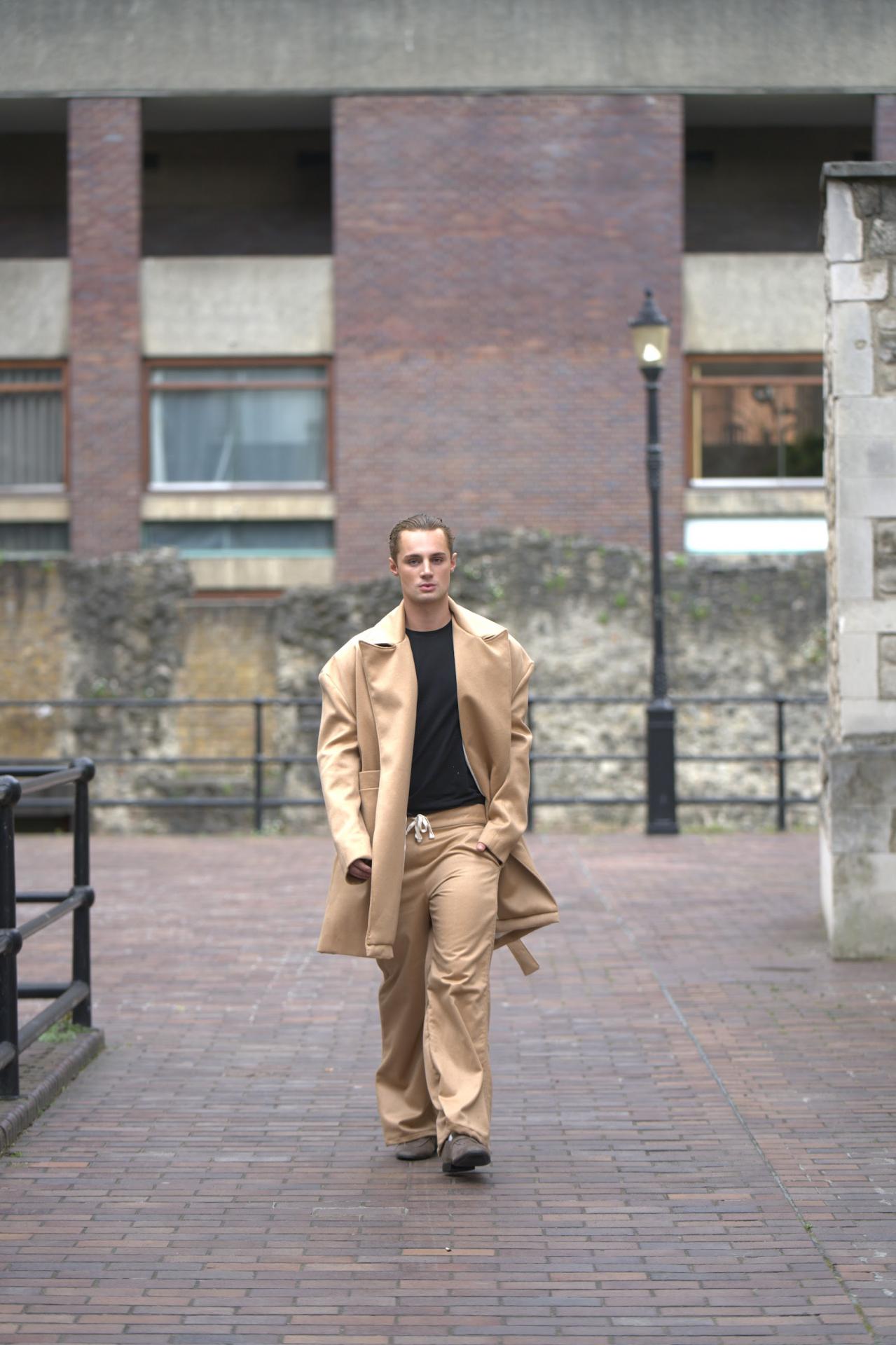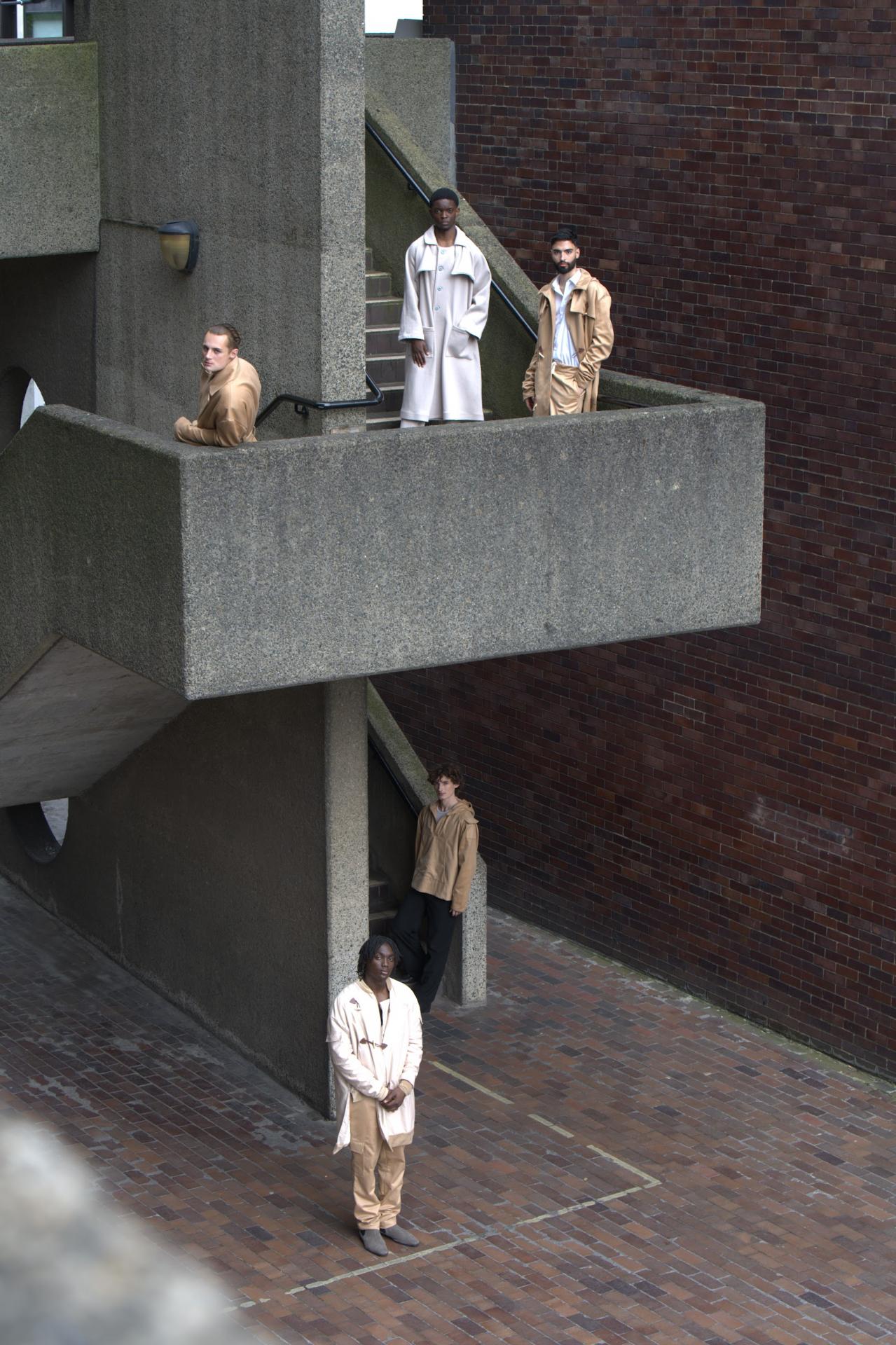This collection is inspired by my experiences with homelessness and running a guerilla street kitchen. When we think of the homeless we tend to think of an unkept appearance. Stained and ripped garments that don’t fit, untamed hair and beards that have not been washed in some time. However a lot of the homeless I have met in my time do not fit this description. They are tradesmen that sleep on night buses. They are chefs in famous restaurants. They are office workers sleeping in cars. With this in mind, to ask what homeless looks like is an empty question. The real question we need to ask is what do the homeless need?
Naturally, asking this lead me to think about warmth, comfort and protection from the elements, all things a home should offer. Looking at the comforts of home and how these luxuries so many of us take for granted could be turned into something that could survive in the outside world, maintaining a smart yet comfortable look that juxtaposes loungewear and outerwear, blurring the lines between the luxuries of home and the great outdoors and using these ideas as a driving factor in choosing fabrics and how garments fit on the body.
This collection draws references in particular from sleeping bags and dressing gowns and combines them with classic Burberry trench coats inspired by the use of dead stock fabric from their 2019 winter collection. The designs offer a luxurious, oversized look that disregards the traditional stereotypes of what homelessness looks like and replacing it with what I know it to be, invisible.
On a deeper level this collection is about re-humanising the people that have been let down by society. Remembering the forgotten and bringing to light the stories that drive people to sleep on the street. It is my hope that this collection removes the stigma surrounding homelessness where rough sleepers are seen as a substance abusing drain’s on society rather than people that are in need of help. It is also my hope that this collection raises awareness not just of the homeless but also of the lack of aftercare when those that are lucky enough are finally housed.
It’s Not Where You’re From It’s Where You’re At is about treating people for all the things they can be instead of for all the things they are not. It reminds us that anybody can be one bad experience from being homeless themselves and how we need to change the way we look at homelessness in general.

